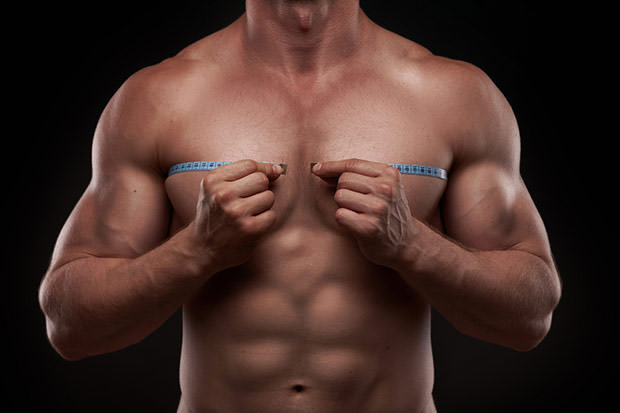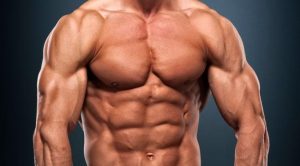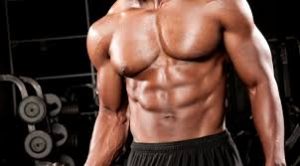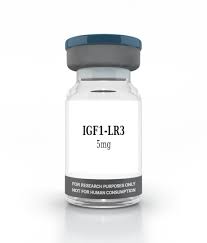How Do Muscles Grow? The science of muscle growth

How do muscles grow? If you work with weights in the gym, you are probably trying not only to lose weight, but also to gain muscle mass.
This article deals with the mechanisms of how the muscles grow. In addition, why do most women do not reach large amounts of muscle when working with weights (with weights)
We will not take into account that there are different types of muscles, like, for example, the heart muscle, since in the context of this material we are more interested in skeletal muscles. The skeletal muscle consists of filamentous myofibrils and sarcomere, which form the muscle fibers and are the basic units of contraction.

650 skeletal muscles of the human body contract when receiving signals from motoneurons (motor neurons) that are activated from one part of the cell called the sarcoplasmic reticulum (sarcoplasmic reticulum). Motor neurons give your muscles a squeeze and, the more your body succeeds in giving these signals to your muscles so that they contract, the stronger you become.
In power sports, it happens that even not very muscular powerlifters lift very heavyweight, although it does not look like a mountain of muscles, this is due to the ability of athletes focused solely on force indicators, to activate motor neurons and to reduce their muscles better. That’s why there are powerlifters that can be relatively smaller than bodybuilders but can raise and squeeze significantly more weight involving motor units (neuromotor unit, motor part). Also, it helps to understand why, after training with creatine supplements, some movements (exercises) become easier to perform and the most tangible initial increase in strength will be when you first start lifting weights. Muscle growth, as a rule, is more stable after this initial period of growth of strength,
Growth Muscle Physiology
After training muscle stress, your body restores or replaces damaged muscle fibers with a cellular process in which it combines muscle fibers in the form of new muscle protein filaments, or myofibrils (muscle fibers). These restored (repaired) myofibrils increase in thickness, providing growth of muscle fibers and their number for the creation of muscle hypertrophy (growth).
Condition of muscle growth
Muscle growth occurs when the rate of synthesis of muscle protein exceeds the rate of decomposition of muscle protein.
This accommodation, however, does not occur, just at the moment when you lift the weights (weight). Instead, muscle growth occurs when you relax between workouts (recovering).

Chest and hand musclesSo how can you add muscle cells to the muscles? Where, in turn, is myosatelliteite and functions as stem cells for your muscles. When activated, they help add more nuclei to muscle cells and, therefore, contribute directly to the growth of myofibrils (muscle cells). Activation and deactivation of these myosatellite cells can determine the difference between what allows certain “genetic fads” to build up massive muscles or become a cause that makes other people hard gainers.
In one of the most interesting studies over the last 5 years, researchers have shown that those who had an excessive response to training with extreme muscle growth, namely with an incredible 58% hypertrophy of the muscle fibers from performing the exercises, they had a 23% myosatellite cells. Bodybuilders with a modest muscle response to training with weights that had a 28% increase had a 19% increase inactivity. It is interesting to note, however, that some people, known as “unresponsive” in the study, had 0% muscle growth and simultaneously 0% activation of myosatellite cells. Therefore, it seems that the more you can activate these cells of myosatellite cells, the more you will grow. So then the question arises, how to activate myosatellite cells in order to increase muscle growth?
3 Mechanisms that get rusty muscles
At the heart of all the progression of natural muscle growth lies the ability to constantly expose muscles to more stress. This stress is the main component that is involved in muscle growth and disrupts homeostasis in the body. Stress and subsequent disturbances in homeostasis causes three main mechanisms that stimulate muscle growth.
Muscle Growth Mechanism # 1: Muscle Stress
In order to induce muscle growth, you must apply a stress load more than your body or the muscles have already adapted. How to do this (how to achieve this effect?) The main way to achieve a stress load for hypertrophy is to lift weights with a large own weight, use heavier weights in training on the principle of periodization of loads (load cycling). This additional muscle tension stimulates changes in the biochemistry of muscle tissue, allowing muscle growth factors to manifest themselves, which include activating the target of rapamycin in cells (mTOR) and activating satellite cells.

Muscle tension also most clearly affects the connection of motor units with muscle cells. The two following factors help to understand the reasons why some people may be stronger while being relatively small (comparatively).
Muscle Growth Mechanism # 2: Muscle Damage
If you ever felt pain in your muscles after training, you experienced localized muscle damage after training. Such local damage to the muscle tissue causes the release of the inflammatory molecule and the cells of the immune system, which activate the satellite cells to rush into battle. Do not take it literally that you should feel pain, so that there is muscle growth (hypertrophy), while as a result of the training you should feel local damage to muscle fibers. This is the effect of training should be observed within 72 hours after its end. As a rule, the pain decays during a given period of time due to other mechanisms.
Muscle Growth Mechanism # 3: Metabolic Stress and Blood Rush to Target Muscles
If you ever felt a burning sensation from exercises or “pumping” in the gym, then you already felt the effects of metabolic stress. Scientists usually have questions about bodybuilders, when they say that pumping causes an increase in muscle volume because metabolic stress and a surge of blood to the target muscles causes them to become larger. As a result of further investigation, it seems that they were on the right track.

Metabolic stress causes cellular edema around the muscles (muscle fibers) that promote muscle growth without necessarily increasing the size of muscle cells. This is because (increasing the amount) of adding muscle glycogen, which promotes thickening (swelling) of muscles (fibers) along with the growth of connective tissue. This type of growth is called sarcoplasmic hypertrophy and is one of the ways that people can get an image of outwardly large and bulky muscles without increasing strength. Learn more about Sustamed
So now that you know the three main mechanisms of muscle growth, the next question is how do hormones affect muscle growth?
IGF-1 – Insulin-like Growth Factor: How Do Hormones Affect The Muscle Growth Process?
Hormones are another component that is largely responsible for muscle growth and recovery, because of their role in regulating the activity of satellite cells (a satellite cage). Insulin-like growth factor-1 (also called somatomedin, IGF-1 from English-IGF-1), in particular mechanical growth factor (MGF) and testosterone, are the two most important mechanisms that promote muscle growth.
Testosterone is the main hormone most people think of when working with weights, and it seems there is some validity in the idea that testosterone increases protein synthesis, inhibits the breakdown of proteins, activates satellite cells, and stimulates other anabolic hormones. It should be taken into account that most testosterone is limited and retained in the body and, consequently, this hormone is not available for use (at least 98% of it). In addition, strength training contributes not only to the release of more testosterone but also makes the receptors of muscle cells more sensitive to the level of free testosterone. Testosterone can also stimulate the growth of the hormone response by increasing the presence of neurotransmitters (transmitters) in damaged areas of muscle fibers.

IGF-1 regulates the amount of muscle mass by enhancing protein synthesis, facilitating glucose uptake by redistributing the uptake of amino acids (building blocks of protein) into skeletal muscles and again, activating satellite cells in order to increase muscle growth.
Why Growth Muscles Should Rest
If you do not provide your body with sufficient rest or nutrition, the anabolic processes can be turned back and enter the body into a catabolic or pernicious condition. The response of the metabolism of muscle protein to a series of exercises with resistance lasts for 24-48 hours; Thus, the interaction of protein metabolism and any dishes consumed during this period will determine the effect of diet on muscle hypertrophy. Keep in mind, there is a certain limit to how much your muscles actually grow, depending on gender, age, and genetics. For example, men have more testosterone in the body than women, and this allows them to build muscle more and more.
Why Rapid Muscle Growth Is Unlikely
Hypertrophy of muscles takes a long time and is a relatively slow process in the vast majority of cases. In general, people do not see noticeable muscle growth for several weeks or even months. Moreover, the initial (starting) changes are due to the ability of your nervous system, to activate the muscles.

Moreover, different people have different genetics, which varies depending on the level of hormones (hormone production), the type and amount of muscle fiber, along with the activation of satellite cells and all this can limit the growth of muscles. To make sure that you are doing everything possible to grow muscles, you have to make sure that protein synthesis in muscles should exceed the breakdown of muscle protein. To do this, you need to use the appropriate source of protein and take a sufficient amount of protein (especially essential amino acids) and carbohydrates to help facilitate the process of cell repair of the destroyed muscle tissue. Noticeable muscle growth and obvious physical changes in the structure of your body’s muscles can be highly motivating, which is why understanding science as growing muscles is actually very important.
How Muscles Grow: Conclusion
In order for the destruction of muscle tissue and muscle growth, you must make your muscles adapt by creating stress, which exceeds the intensity of the previous load, to which your body has already adapted. This can be achieved by the stable lifting of heavier weights, constant changes in your training program, so that you can damage as many muscle fibers as possible and push your muscles to failure, thereby obtaining the maximum “pumping” of blood into muscle tissue. After the training is over, the most important part of the process of muscle growth begins – adequate rest and provision (supply) of sufficient fuel (nutrition) for your muscles so that they can recover and grow unhindered.